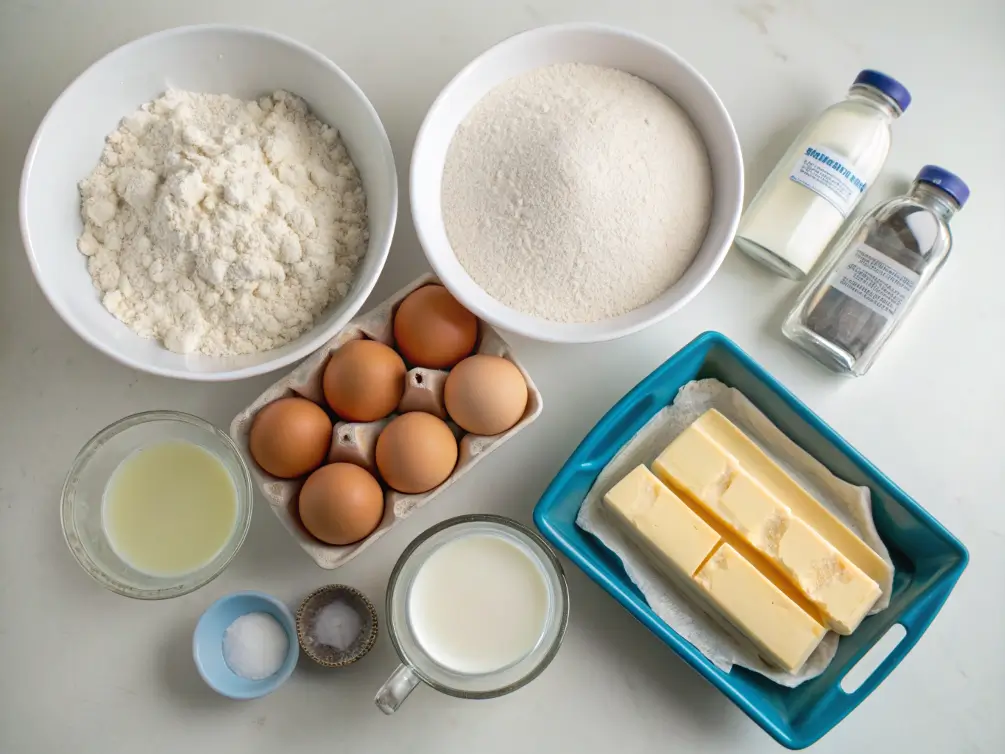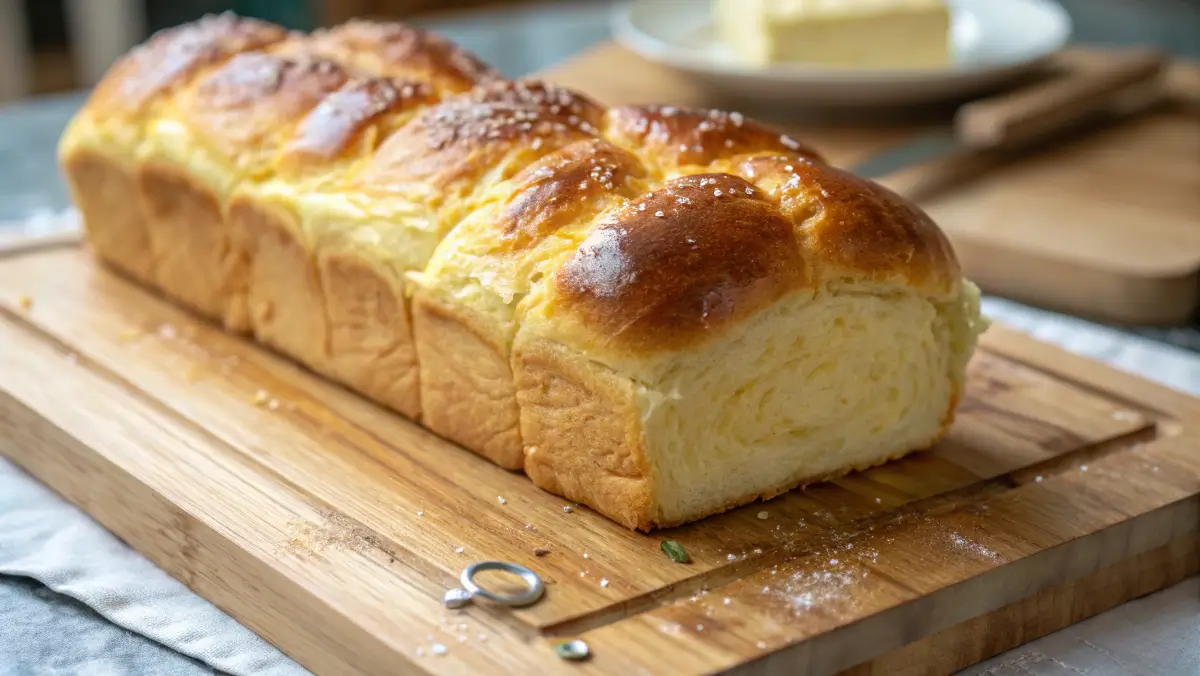Brioche bread is more than just a recipe, it’s a culinary masterpiece that combines richness, fluffiness, and versatility in every bite. Whether you’re a seasoned baker or a beginner, this guide will walk you through everything you need to know to create the perfect brioche bread recipe. From its fascinating history to step-by-step instructions, essential tips, and creative variations, this article is your one-stop resource for mastering brioche. By the end, you’ll not only have a delicious loaf of brioche but also the confidence to experiment with flavors and techniques. Let’s dive into the world of buttery, golden brioche bread!
Introduction to Brioche Bread
What is Brioche Bread?
Brioche bread is a French classic known for its rich, tender crumb and slightly sweet flavor. What sets it apart from regular bread is its high butter and egg content, which gives it a luxurious texture and golden hue. Whether enjoyed as a breakfast treat, a dessert base, or a sandwich loaf, brioche is a versatile bread that’s sure to impress.
The History and Origin of Brioche
Brioche has a storied past, dating back to 15th-century France. Its name is derived from the Old French word broyer, meaning “to knead.” Historically, brioche was a symbol of wealth and indulgence, often enjoyed by the aristocracy. Today, it’s a beloved staple in bakeries and home kitchens worldwide, thanks to its irresistible flavor and texture.
Why You Should Try This Brioche Bread Recipe
If you’ve never made brioche before, now’s the time to try! This brioche bread recipe is straightforward, rewarding, and perfect for bakers of all skill levels. Plus, the aroma of freshly baked brioche filling your kitchen is worth every minute of effort. Whether you’re craving a buttery loaf for breakfast or a show-stopping dessert, this recipe has you covered.
Essential Ingredients for Brioche Bread
The Role of Each Ingredient in Your Brioche Bread Recipe
Creating the perfect brioche bread recipe starts with understanding the ingredients. Each component plays a crucial role in achieving that signature rich, fluffy texture. Here’s what you’ll need:

Flour: The Foundation of Brioche
- All-purpose flour: This forms the base of your dough, providing structure and stability.
- Bread flour: For a chewier texture, you can substitute part of the all-purpose flour with bread flour.
Butter: The Secret to Richness
- Unsalted butter: Softened butter is folded into the dough, giving brioche its luxurious and tender crumb. Make sure it’s at room temperature for easy mixing.
Eggs: Adding Structure and Flavor
- Large eggs: Eggs not only enrich the dough but also contribute to its golden color and soft texture.
Sugar: Balancing Sweetness
- Granulated sugar: A touch of sugar enhances the flavor and helps feed the yeast, ensuring a good rise.
Yeast: The Key to a Fluffy Texture
- Active dry yeast: This is essential for leavening the dough, making it light and airy.
Other Ingredients
- Milk: Adds moisture and softness to the dough.
- Salt: Enhances flavor and controls yeast activity.
Tips for Choosing High-Quality Ingredients
To make the best brioche bread recipe, always opt for fresh, high-quality ingredients. For instance, use European-style butter for a richer flavor and organic eggs for a vibrant color. Fresh yeast will also ensure your dough rises perfectly.
Tools and Equipment Needed
Must-Have Tools for Making Brioche Bread
While brioche is a delightful bread to make, having the right tools can make the process much easier. Here’s what you’ll need:
Stand Mixer vs. Hand Mixer: Which is Better?
- Stand mixer: A stand mixer with a dough hook is ideal for kneading the buttery brioche dough, which can be sticky and challenging to handle by hand.
- Hand mixer: If you don’t have a stand mixer, a hand mixer with dough hooks can work, though it may require more effort.
The Importance of a Good Baking Pan
- Loaf pan: For a classic brioche loaf, a non-stick loaf pan ensures even baking and easy removal.
- Brioche molds: If you’re making individual brioche buns, specialty molds can give them a professional look.
Optional Tools for Advanced Brioche Bakers
- Bench scraper: Helps with dividing and shaping the dough.
- Pastry brush: For brushing egg wash on the dough before baking, giving it a shiny, golden finish.
- Kitchen scale: Ensures precise measurements for consistent results.
With these tools and ingredients, you’re ready to dive into the brioche bread recipe and create something truly special.
Step-by-Step Brioche Bread Recipe
Preparing the Dough for Your Brioche Bread Recipe
Making brioche bread is a labor of love, but the results are worth every minute. Follow these steps to create a soft, buttery loaf that will wow your family and friends.
Mixing the Ingredients
- Activate the yeast: In a small bowl, combine warm milk (about 110°F), a pinch of sugar, and the yeast. Let it sit for 5-10 minutes until frothy.
- Combine dry ingredients: In a large mixing bowl, whisk together the flour, sugar, and salt.
- Add wet ingredients: Make a well in the center of the dry ingredients and add the eggs and yeast mixture. Mix until a shaggy dough forms.
Kneading the Dough to Perfection

- Incorporate the butter: Gradually add softened butter to the dough, a few tablespoons at a time. This ensures the butter is evenly distributed.
- Knead the dough: Using a stand mixer with a dough hook, knead the dough on medium speed for 10-15 minutes until it becomes smooth and elastic. If kneading by hand, this may take 20-25 minutes.
First Rise: Letting the Dough Rest
- Shape the dough: Form the dough into a ball and place it in a lightly greased bowl.
- Let it rise: Cover the bowl with plastic wrap or a damp towel and let the dough rise in a warm place for 1-2 hours, or until it doubles in size.
Shaping the Brioche Bread
Classic Brioche Loaf
- Divide the dough: Punch down the risen dough and divide it into equal portions.
- Shape the loaf: Roll each portion into a log and place them side by side in a greased loaf pan.
Brioche Buns or Rolls
- Portion the dough: Divide the dough into smaller pieces, depending on the size of buns you want.
- Shape the buns: Roll each piece into a smooth ball and place them on a baking sheet or in brioche molds.
Second Rise: Ensuring a Light and Airy Texture
- Let it rise again: Cover the shaped dough with a towel and let it rise for another 30-45 minutes. The dough should puff up slightly.
Baking Your Brioche Bread to Golden Perfection
- Preheat the oven: Set your oven to 375°F (190°C).
- Brush with egg wash: Beat an egg with a tablespoon of milk and brush it over the dough for a shiny, golden crust.
- Bake: Place the dough in the oven and bake for 25-30 minutes for a loaf, or 15-20 minutes for buns, until golden brown.
- Cool: Let the bread cool on a wire rack before slicing.
Tips and Tricks for the Best Brioche Bread
How to Achieve the Perfect Texture in Your Brioche Bread Recipe
- Use room-temperature ingredients: Cold eggs or butter can hinder the dough’s ability to rise properly.
- Don’t rush the rise: Letting the dough rise slowly ensures a light and airy texture.
- Knead thoroughly: Proper kneading develops the gluten, giving the bread its structure.
Common Mistakes to Avoid When Making Brioche
- Adding butter too quickly: Incorporate butter gradually to avoid a greasy dough.
- Overbaking: Keep an eye on the bread to prevent it from drying out.
- Skipping the egg wash: This step is crucial for that beautiful golden crust.
Storing and Freezing Brioche Bread
- Storing: Keep brioche in an airtight container at room temperature for up to 3 days.
- Freezing: Wrap the bread tightly in plastic wrap and freeze for up to 3 months. Thaw at room temperature before serving.
For more delicious recipes, check out our Egg Loaf Vegan Recipe to pair with your brioche bread.
Variations of Brioche Bread
Sweet vs. Savory Brioche Bread Recipes
The beauty of brioche lies in its versatility. While the classic brioche bread recipe is slightly sweet, you can easily adapt it to suit your taste. For a sweet twist, add a drizzle of honey or a sprinkle of cinnamon sugar. Alternatively, for a savory version, mix in herbs like rosemary or thyme, or even grated cheese for a rich, flavorful loaf.
Adding Flavors: Chocolate, Fruits, and Herbs
- Chocolate brioche: Fold in chocolate chips or chunks into the dough for a decadent treat.
- Fruit-filled brioche: Add dried fruits like raisins, cranberries, or chopped apricots for a burst of sweetness.
- Herb-infused brioche: Incorporate fresh or dried herbs like basil, dill, or parsley for a savory option.
Gluten-Free and Vegan Brioche Options
If you have dietary restrictions, don’t worry you can still enjoy brioche! For a gluten-free version, use a high-quality gluten-free flour blend. For a vegan brioche bread recipe, replace the eggs with flax eggs and use plant-based butter and milk. While the texture may vary slightly, these alternatives still deliver a delicious result.
Serving Suggestions for Brioche Bread
Breakfast Ideas with Brioche Bread

Brioche is a breakfast superstar. Slice it thick and toast it for the perfect base for avocado toast or French toast. You can also use it to make indulgent breakfast sandwiches with eggs, bacon, and cheese.
Using Brioche for Desserts and Sandwiches
Brioche’s rich and buttery flavor makes it ideal for desserts. Use it to make bread pudding, trifle, or even as a base for strawberry shortcake. For sandwiches, brioche buns are perfect for burgers or pulled pork, adding a touch of elegance to your meal.
Pairing Brioche with Beverages
Brioche pairs wonderfully with a variety of beverages. Enjoy it with a cup of coffee or tea for breakfast, or pair it with a glass of wine or champagne for a sophisticated dessert experience.
For more inspiration, check out our Cake Mix Fruit Eggs Recipe.
FAQs About Brioche Bread
What Makes Brioche Bread Different from Regular Bread?
Brioche stands out because of its high butter and egg content, which gives it a rich, tender crumb and slightly sweet flavor. Unlike regular bread, brioche is more akin to a pastry, making it perfect for both sweet and savory dishes.
Can I Make Brioche Bread Without a Stand Mixer?
Absolutely! While a stand mixer makes kneading the buttery dough easier, you can still make a brioche bread recipe by hand. It will take a bit more effort and time, but the results will be just as delicious.
How Long Does Brioche Bread Stay Fresh?
Brioche bread stays fresh for about 2-3 days when stored in an airtight container at room temperature. To extend its shelf life, you can freeze it for up to 3 months.
Can I Freeze Brioche Dough?
Yes, you can freeze brioche dough. After the first rise, shape the dough, wrap it tightly in plastic wrap, and freeze. When ready to use, thaw it in the fridge overnight, let it rise again, and bake as usual.
Why Did My Brioche Bread Turn Out Dense?
A dense brioche is often due to under-kneading, insufficient rising time, or using cold ingredients. Make sure to knead the dough thoroughly, let it rise properly, and use room-temperature ingredients for the best results.

